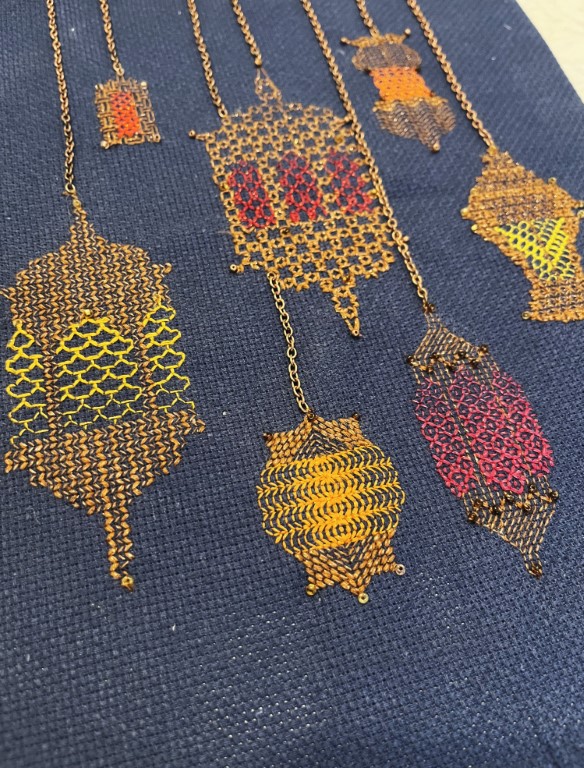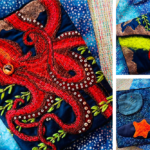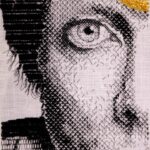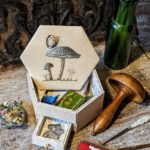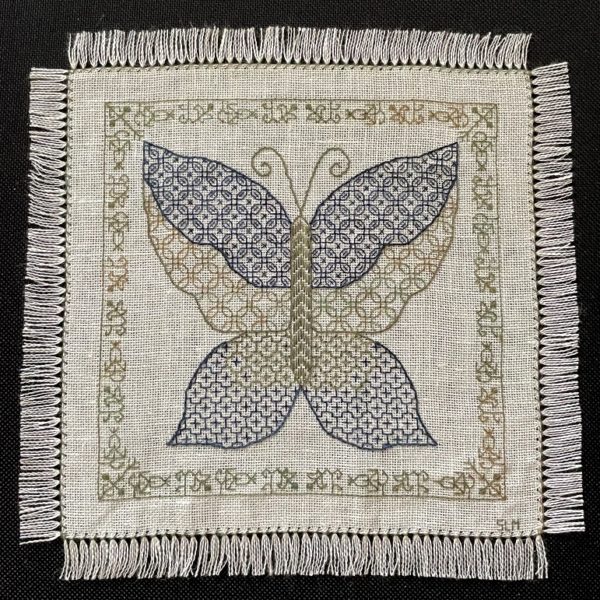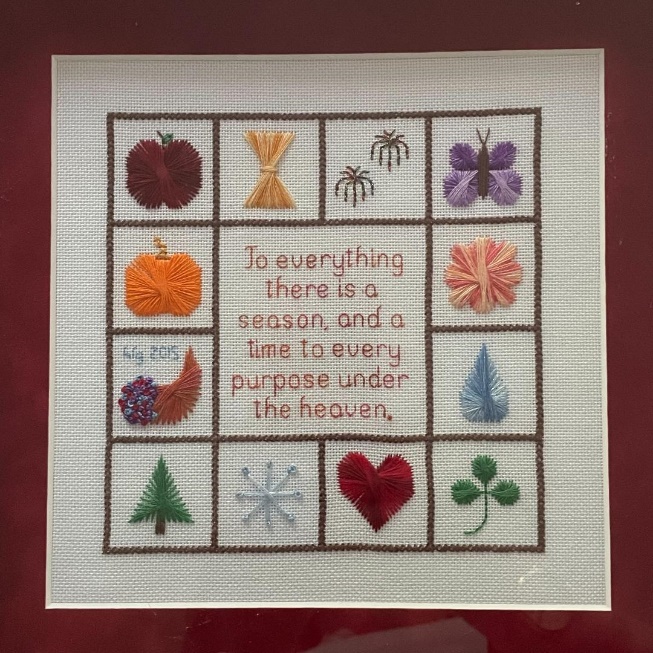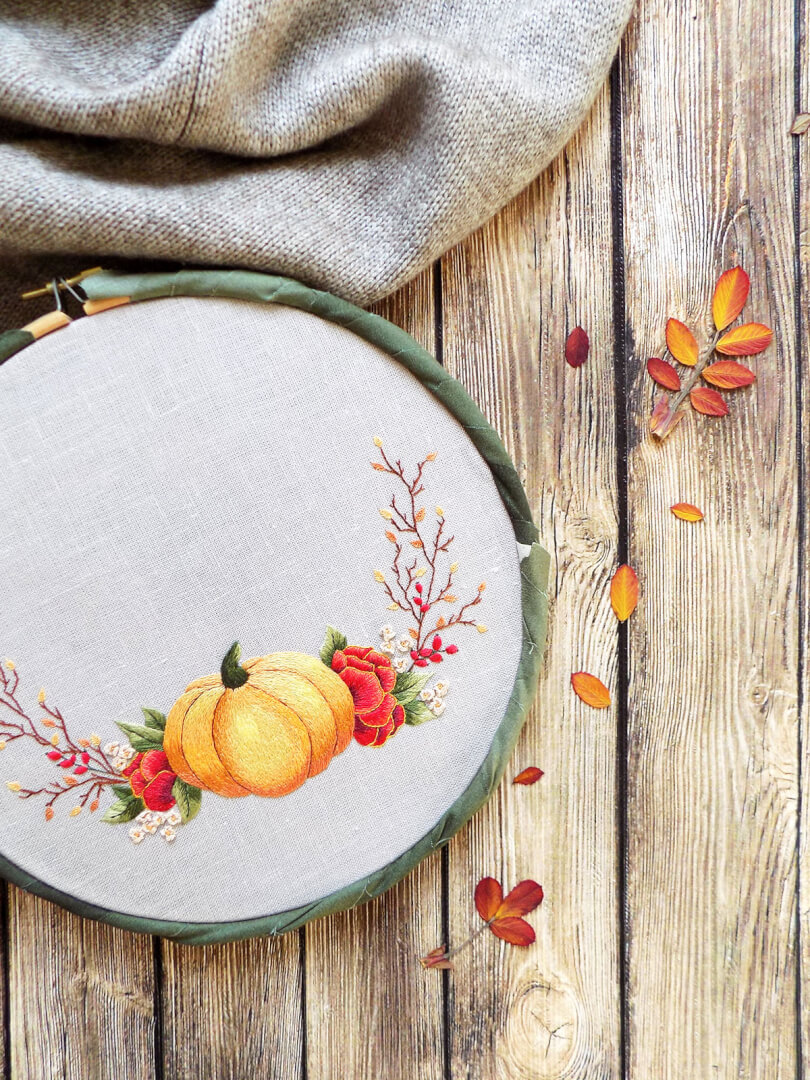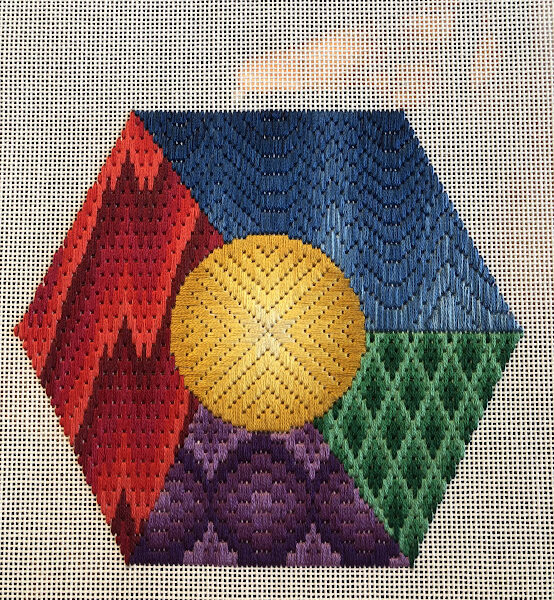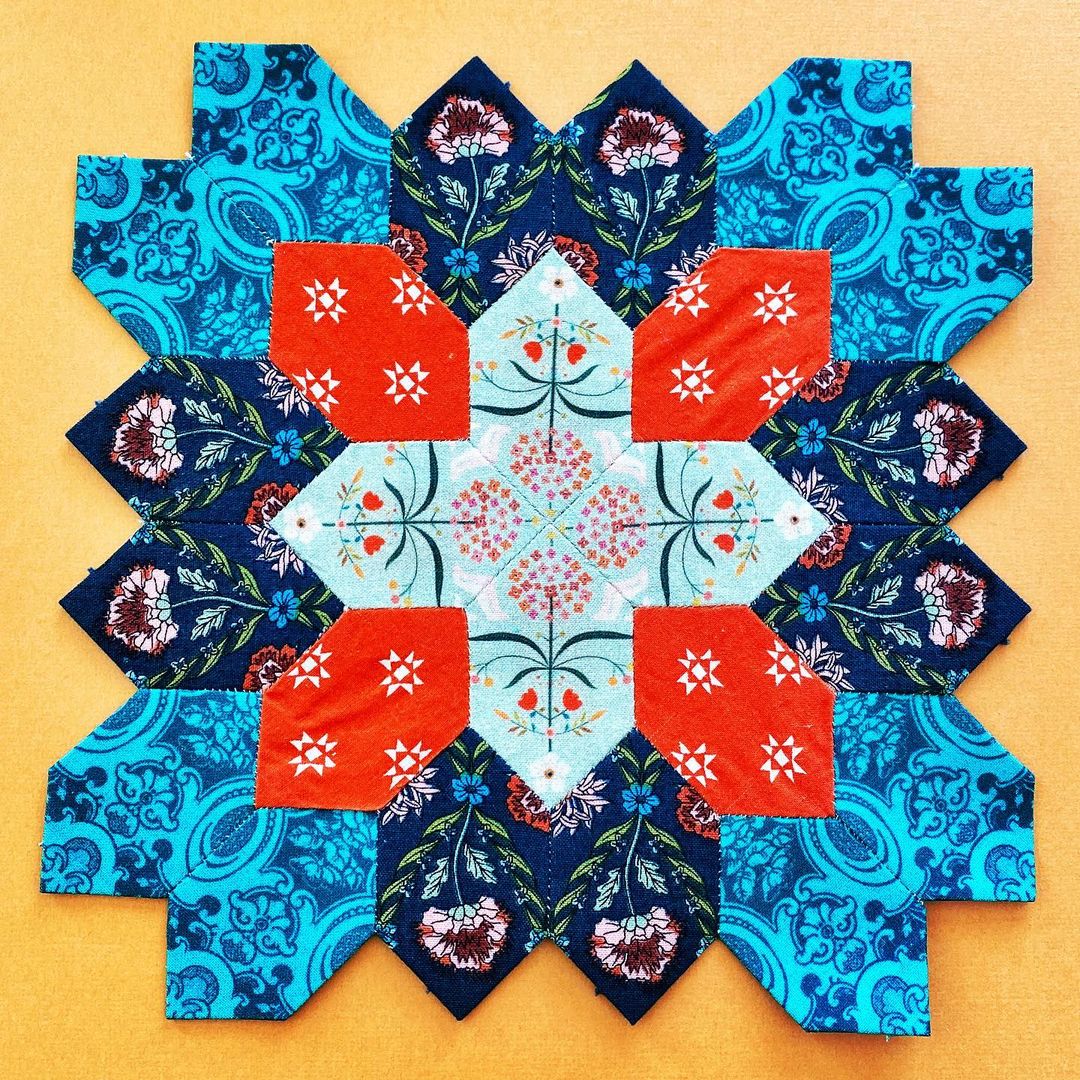This month we spoke with Dr. Valentina Grub, who comes to EGA this month with a new online studio class, Moroccan Lanterns, an intriguing blackwork design inspired by her memories of living in Rabat. From our conversation, it’s become apparent that many of Dr. Grub’s experiences influence her needlework—and it’s part of what makes her work so interesting! Her background includes multiple certifications (completed and in progress) from the Royal School of Needlework, a fellowship with The Burgon Society, which researches academic dress, as well as a historical fantasy novel centered on a textile historian!
You’re a RSN trained needleworker in Jacobean Crewelwork, with certifications underway for Canvaswork, Silk Shading, and Goldwork. You also hold a fellowship from The Burgon Society, “a learned society for the study of academic dress and regalia.” Did your needlework study inform your involvement with The Burgon Society (or vice versa)? Does academic dress often involve needlework? It feels like these two paths of interest must be intertwined in some way!
Academia and needlework have been two of my ongoing passions, ebbing and flowing throughout my work. They came together very noticeably in my University of St. Andrews PhD dissertation on opus anglicanum (medieval English embroidery), but they also inform each other in other ways. I often find that my embroidery relates to academic subjects, or becomes a deep dive into techniques and motifs, which is what academia is at its heart. I am currently working on several projects, one of which is repurposing and embroidering an academic gown as a visual commentary for women in academia.
As for embroidery in academic dress, some academic regalia is embroidered, particularly the gowns worn by university officials.
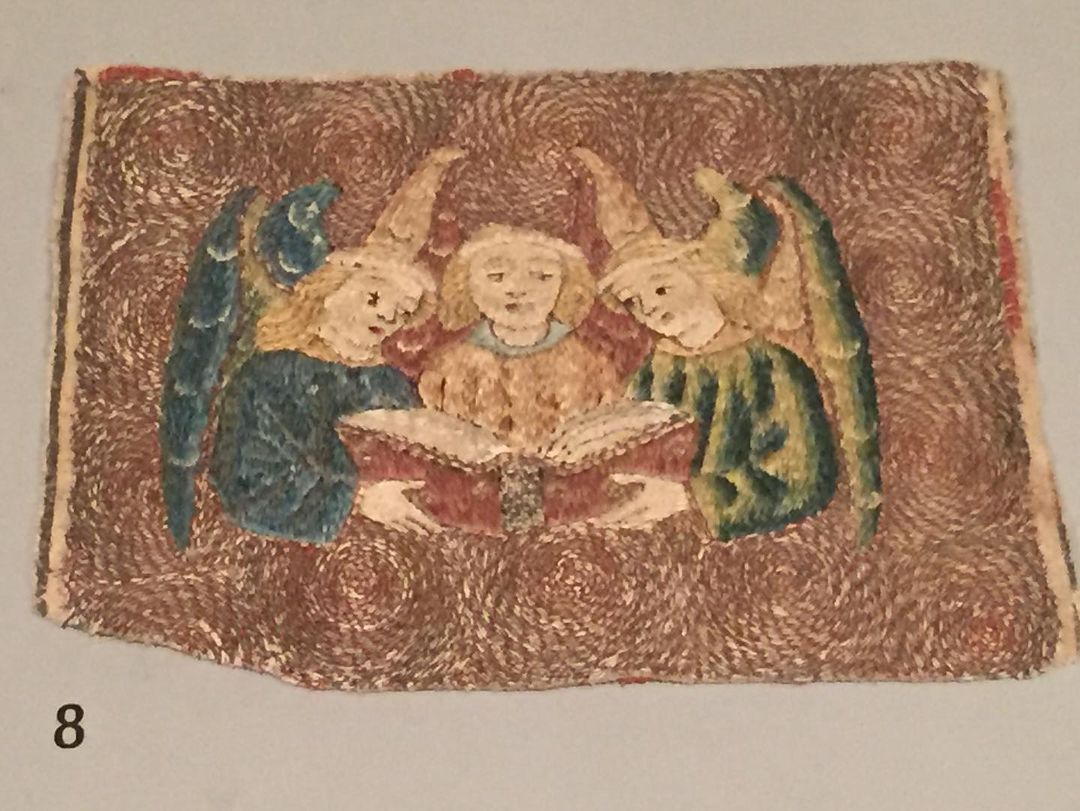
The following is a recreation of the above original textile, which lives in the Bavarian National Museum in Munich. I visited the museum with my mother, and then gave her the below embroidery for Christmas that year.

You’re also a fiction writer, having assumed a nom de plume with a fellow writer during the 2020 lockdown to explore an historical fantasy novel, Enchantmail. Have your studies with RSN or The Burgon Society informed your writing or the story?
Absolutely! Our novel began as an outlet for all the traveling we wished we could do through Europe during the lockdowns, and we overlaid it with fantasy and magic. It’s a delightful romp through 1820s France, Germany, Italy, and England, featuring real people, places, and events. Our main characters are both academics who struggle with the conflicts and misogyny in academia (it’s present even in a fantasy world). My character, Venetia, is a textile historian, so is very informed about embroidery. And we couldn’t neglect descriptions of elaborate Regency-era clothing, which featured embroidery very heavily.

It feels like there is a throughline between your dissertation for The Burgon Society, titled “A Brief History of Academic Dress in the Middle East and the Maghreb,” and your Moroccan Lanterns design. What drew your interest to this region and its aesthetics?
My upbringing has often informed my embroidery aesthetic. I grew up moving around the world because of my parents’ jobs in the hotel industry, living in Turkey, Egypt, Morocco, South Africa, and Dubai. My mother frequented local craftspeople wherever we lived, particularly supporting women artisans who are often at an economic and social disadvantage in these countries. The art and crafts of these communities made up the fabric of my childhood, and are both a source of comfort and inspiration.
As for my speciality in the Burgon Society, while it is a venerable society steeped in decades of research, almost all of the research into academic dress had been centered on Western universities. My dissertation and subsequent publications opened a whole new avenue of research into the ceremonies and clothing of non-Western academic institutions. After all, the oldest university in the world, al-Qarawiyyin in Fez, Morocco, was founded by a woman, Fatima al-Fihriya, in 857 AD. It was about time that the academic dress there was researched.

What does your design process look like? Where do you find inspiration?
As you can imagine, the design process differs according to the project. For the projects for the Royal School of Needlework diploma there are very specific parameters and guidelines that must be followed. For instance, the canvaswork piece has to be 8 inches by 6 inches, must show at least two areas of transition between stitches, and include at least two of each diagonal, cross, horizontal and/or vertical stitches. My tutor (Auburn Lucas) is an amazing teacher and our group is massively supportive. I eventually settled on a photograph taken by one of my best friends, Clare, of Edinburgh Castle.
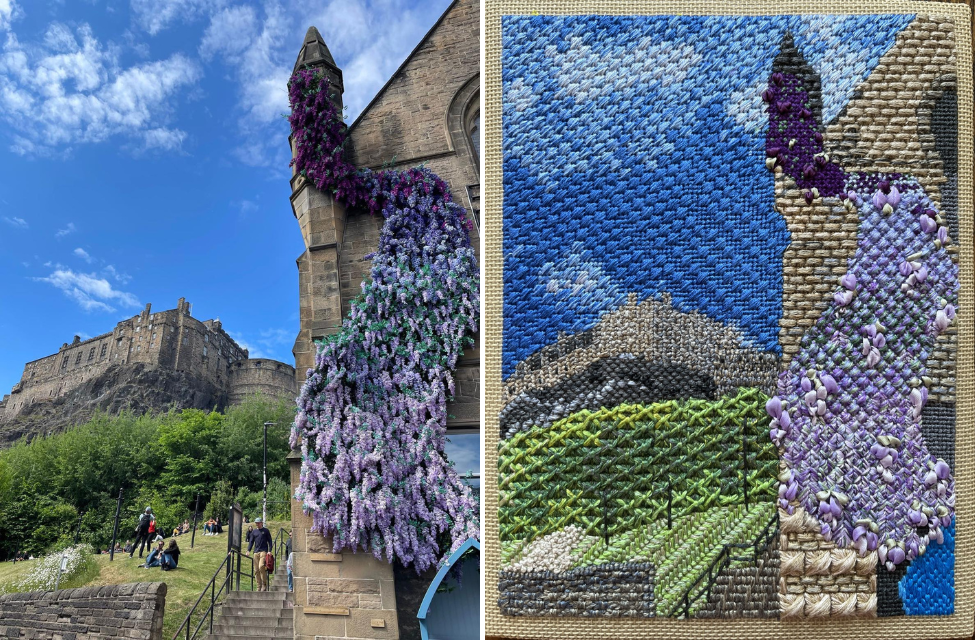
For embroidery commissions I work very closely with my clients. For instance, a couple years ago I was asked to make an ecclesiastical stole for a friend’s ordination into the Church of England.

I was inspired by his favorite stone carving of a rabbit holding a cross in St. Melangell’s Church, Pennant Melangell (close to his current parish in Wales). The coloring of the embroidered rabbits mimics that of his pet rabbits. He is also an avid bell-ringer, so the cross on the neck is composed of four crossed handbells.
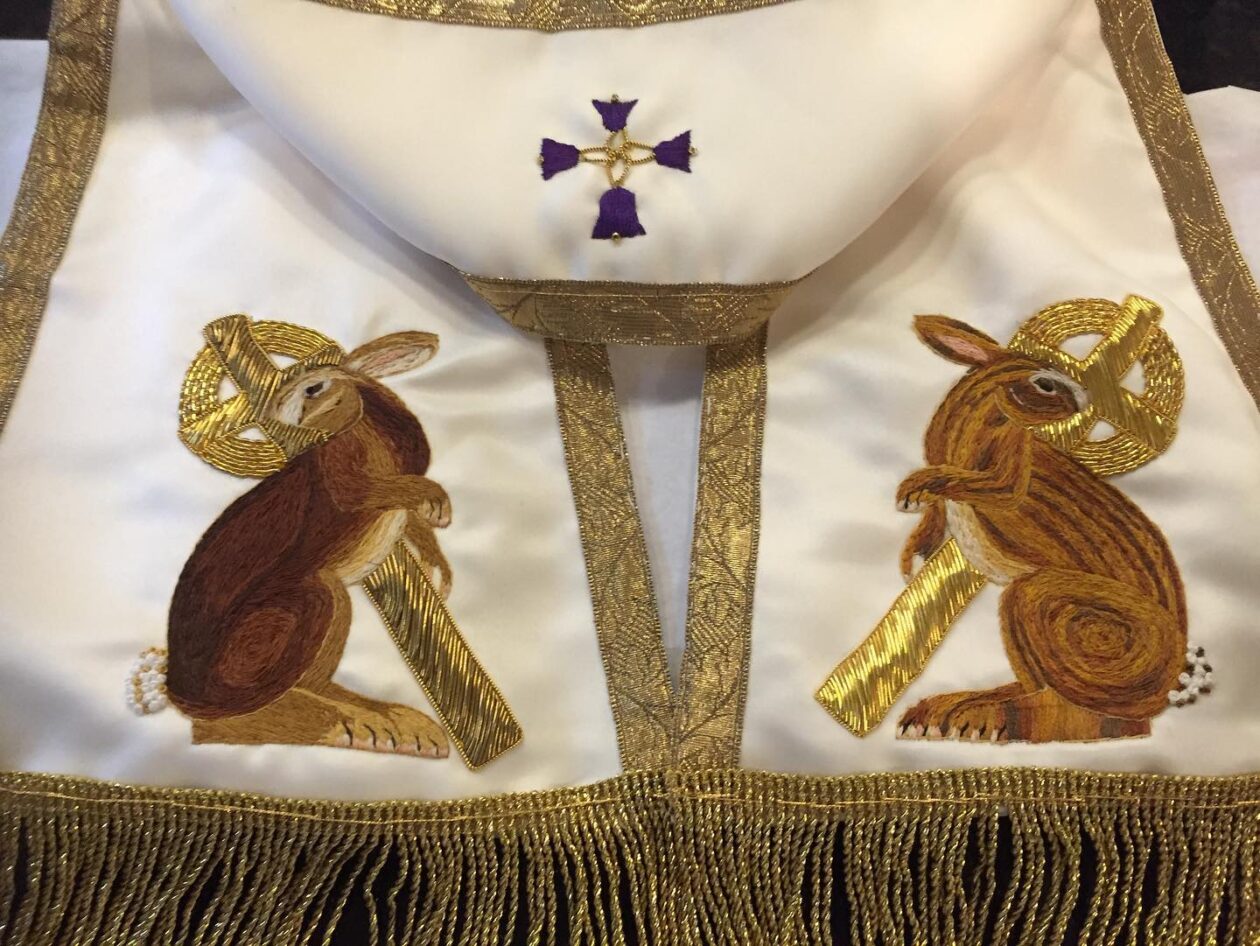
Inspiration for personal embroideries comes from anywhere, perhaps a line I read in a novel or something I saw online. I just recently joined Instagram and it’s been such a font of ideas!
Do you have a favorite design that really showcases your aesthetic?
I keep thinking my next embroidery will be my favorite! And my aesthetic is continuously evolving, particularly as I find new courses, competitions, and challenges. However, one of my favorite works was a hat I embroidered for a friend who went to the Henley Regatta. I was inspired by the river’s waves lapping along the shore.
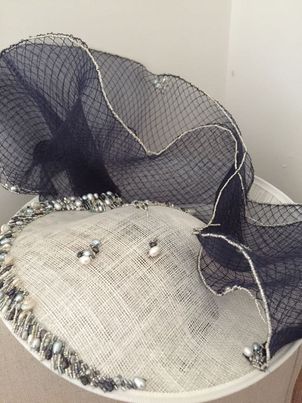
What crafting or color trends (if any) are you drawn to right now?
I can’t say that I’m drawn to, or even follow, any particular trend in particular. I am very happy, though, that so many embroidery artists are expanding the definition of embroidery and working with alternative materials and motifs. There’s nothing wrong with embroidering flowers (I’m just about to start a silk shading a peony) but there’s something exciting about the new embroideries being showcased.
Do you have a daily/weekly practice that you’d recommend to other embroiderers interested in honing their craft?
I often take time to study a piece of embroidery very closely, almost as if I were going to dissect it. Mentally I challenge myself to imagine how the artist achieved the effect that drew me to the work in the first place. Then I reverse the process, finding an image or object, then visualizing how I would translate it into embroidery. Also, not every embroidery piece has to be an original design. Kits are a great way to hone one’s skills and sometimes, if I have restless hands but lack inspiration, I raid my “kit stash”.
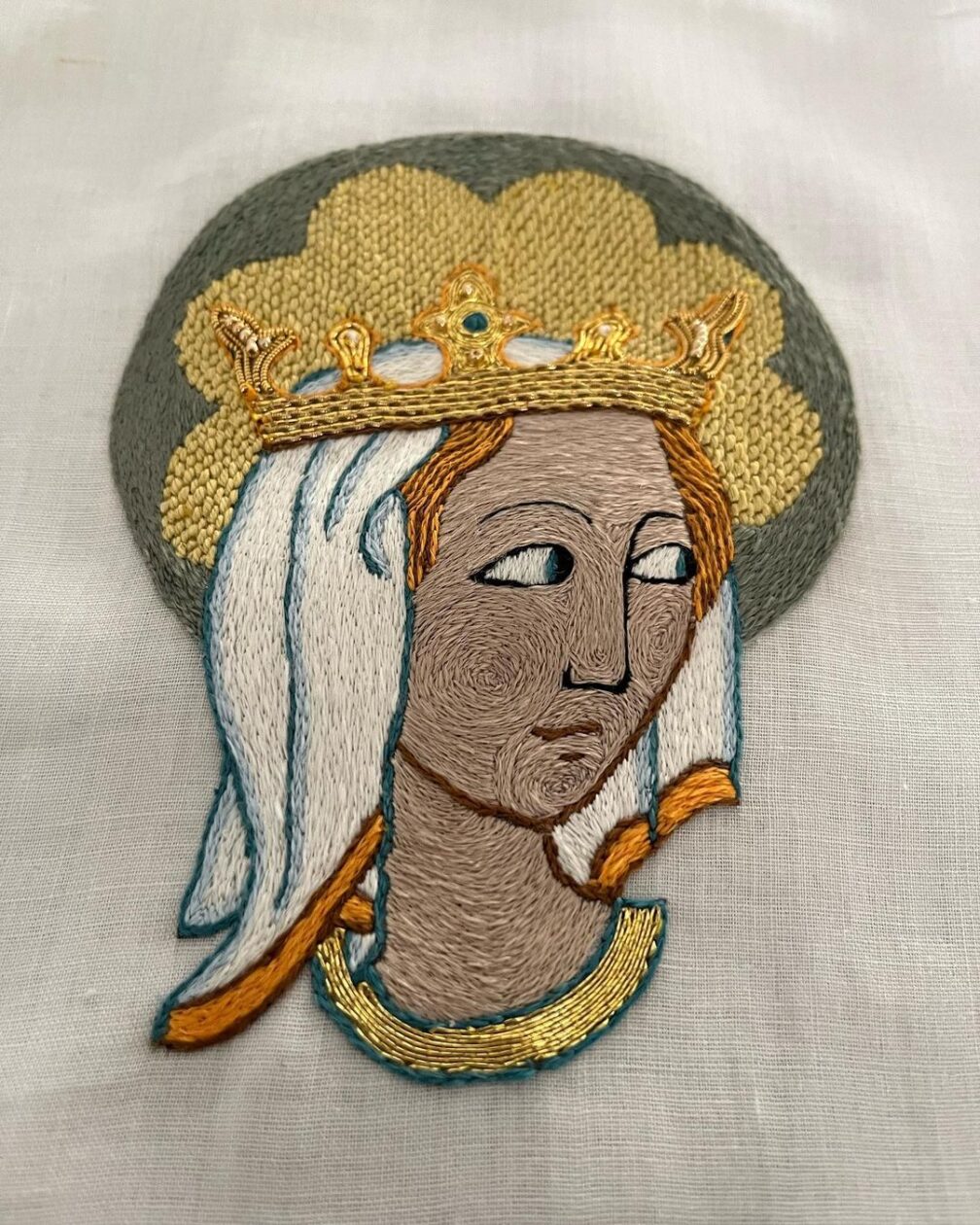
Your Moroccan Lanterns design is created with Blackwork techniques, but they really come to life in your choice of colored threads. What inspired this particular design?
A few months ago I was looking through old family photos that I took when we lived in Rabat, Morocco. We took several trips to the medina and the shops filled with lanterns were always so photogenic. I noticed that the geometric nature of the lamps would lend itself perfectly to blackwork (or any counted thread embroidery) but I wanted to emphasize the colorful glass that makes the lanterns so beautiful, either in sunlight or when they’re illuminated at night.
What should interested EGA members know before taking Moroccan Lanterns? What do you hope stitchers take from Moroccan Lanterns?
It’s a very empowering class in that the choice of thread color for the lantern glass, and the lantern placement, is up to the embroiderer. Just make sure to place the lanterns so that the chains don’t overlap.

What are you working on right now?
Somehow I’ve slightly overcommitted myself and now it’s my “Summer of Embroidery.” I have two works that I’m submitting for the EGA National Seminar in August, a sample for the Hand & Lock Prize due in July, and another sample for the Broderer’s Exhibition in July. All of these have a very Dark Academia vibe, coming back full circle to your first question. I’m also working on another ecclesiastical stole for my best friend’s mother, who just became a deacon!

Where can interested needleworkers discover more of your work and upcoming projects and events?
My website is https://www.valentinasgrub.com and I’m now on instagram @professorwolpertinger
Interested stitchers can now register for Moroccan Lanterns: with Dr. Valentina Grub!
